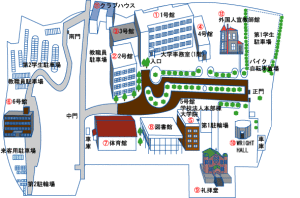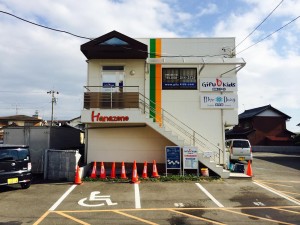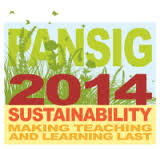JALT CALL 2014 (Nagoya)
A new experience
I’ll be attending the JALT CALL conference this weekend for the first time, in Nagoya.
I won’t be presenting, as I am trying to take it easy this year. Figure I deserve it after finishing my MA dissertation last month!
Hope to see some of you there 🙂
conference curriculum presentations: innovation program design
by sendaiben
leave a comment
The 1st Michinoku English Education Summit (MEES) Conference
Fun times in Hachinohe
I was lucky enough to be able to attend and present at the first MEES Conference last weekend. It was held at Hachinohe Gakuin University, and was possibly the best-organized conference I have ever attended. The preparation, execution, and communication on the part of the organizers was flawless.
My presentation was about expanding academic programs by reaching out to colleagues. You can download my slides in pdf format here (140601 MEES), and watch the full presentation below:
By the way, the Daiwa Roynet Hotel in Hachinohe is very pleasant and has an amazing buffet breakfast.
Welcome to the desert of the real
The march of technology continues
Microsoft announced a new product the other day: simultaneous interpretation over Skype.
Also Google bought Word Lens last week and made all their products free. Check it out and blow your mind.
How can this not impact language teaching and learning?
Oh, and the Google robot cars are one step closer:
GUEST POST: Do Or Die
Securing your future in EFL
Today I am extremely pleased to feature a guest post from Mark Kulek, a school owner from Gifu. Mark is a great guy, a passionate educator, and, as you’ll see from his post below, a shrewd business owner.
First, let me thank Ben for this opportunity to share my experience with his readers.
Ben published a post that concerns me and many others who are teaching English conversation here in Japan.
Ben asked me to share what I am doing to survive in the English conversation business.
Background information:
I arrived to Japan in August of 1996 with no experience teaching English or running a business. I graduated with a degree in literature, but had no plans of teaching at that time. After graduating from my university, I worked as a sales representative. I liked it, but never really felt satisfied.
My sister left for Japan in 1992. I felt a little jealous of her. She was off to a fantastic adventure and I was still doing the same old thing. When she had come back home, she told me that I would love it in Japan. She planted a large seed in my head.
I came to Japan with one main goal, to make money.
In 1996, my group of friends were all hustling to earn money. We all had our full-time job, but that was not enough. We took on private students, part-time work and even performed as priests doing wedding ceremonies. Very early upon my arrival I knew that I could work hard and have a comfortable life. And I knew that I could make it on my own.
In 2001, I opened a conversation school. At first, I was only open a few days a week supplementing my income with part-time work. After a few years, I was busy five days a week plus I needed a part-time teacher. This situation continued. Then about four years ago things changed.
Demographics started impacting enrollment. My area was graying quite fast. Young families were not moving into my area. The local kindergarten was losing students. Two local elementary schools had to merged. From 2011, basically, I had zero new enrollments at the school. The future was looking bleak.
In the meantime, I was working at a few kindergartens part-time. One particularly valued English learning more than the others. This is the kindergarten that changed everything for me. I worked there once a week doing kanai classes. Once a week turned into twice a week plus I did after school kagai classes.
I had to make a change.
The kindergarten’s owner had a building, not being used, right next to the kindergarten. Each week I would look at that building and think, “this would be an ideal location for my English school.”
I took the principle/owner of the kindergarten out for dinner. We had a few glasses of beer, enough to get us feeling happy. I then suggested that we go into the English conversation business together. He was very positive about the prospect, but needed some time to think about it. He did and we formed a partnership. We fixed up that old building and made it the finest English conversation school in the city.
I am happy to report that our partnership is working out beautifully.
I moved into the new facility in September of 2013. 50 students from the previous location relocated with me. From September 2013 to March 2014, 22 new students have joined. From April 2014 to May13, 2014, 46 new students have joined. There are trial lessons scheduled through June. I predict that we will have new students joining throughout the academic year.
In conclusion
It’s win win for both of us. The kindergarten is providing more services, convenience, safety and personalization to their students. As for me, I’m getting job security, business help from people who have been running a kindergarten for over 50 years and financial backing. One of my biggest concerns (before the partnership) was one day being able to step back from day-to-day teaching, after all I am not getting any younger.
This partnership with the kindergarten will allow me to run a successful business. In fact, since September 2013, I have hired two part-time teachers to cover the increase of students. This has allowed me to focus on management, to help my teachers, and to make materials.
I feel I have set myself up for a long and prosperous future in the English conversation field.
I make my home in Gifu, Japan, where I have an English conversation school for both adults and young learners. I have been teaching EFL for 18 years. I’m interested in professional development and activity-based curriculums. You can find me on Twitter as @gifumark
Pan-SIG 2014
I just got back from this year’s JALT Pan-SIG Conference in Miyazaki. The Pan-SIG is my favourite conference, and it’s one I try not to miss every year. I think this was my fifth or sixth Pan-SIG.
I love the Pan-SIG because it’s run by the SIGs, and everyone is really into what they are doing. It’s more concentrated than the JALT National Conference, and the overall quality of presentations tends to be higher. The smaller size also makes it a great place to meet and talk to people.
This year’s venue was fantastic. I had never been to Miyazaki before, but was really impressed. A friend said “it feels more like Miami than Japan” and I agree: wide streets, palm trees, low buildings, lots of space, and not at all crowded. The university where the conference was held was downtown, easily accessible, and very comfortable.
Unfortunately I was only able to attend the first day as Miyazaki isn’t the easiest place to get to from Sendai 🙂
The 2014 Pan-SIG tried a couple of new things, and I’ll talk about each one below:
1. Information/sustainability
The organizers didn’t produce any printed material for the conference, instead publishing the program online. I completely support this approach and agree that most conferences are very wasteful in terms of printing a bunch of stuff that no-one ends up keeping or reading afterwards.
However, this time round there were a few gaps that should be addressed in the future (or at other conferences). The online information didn’t seem to be complete or at least wasn’t intuitive enough for me to find. I actually didn’t know about some of the rooms so missed half the poster sessions.
I think even if the conference goes paperless a simple one-page handout with a map and a list of presentations is necessary. It’s also necessary to have signs indicating where things are, and to make sure that the student volunteer staff know the rough schedule and where things are (I asked half a dozen people where the poster sessions were, but none of them understood what I was talking about).
2. Replacing presentations with poster sessions
I am not a fan of this. I think posters and presentations are very different beasts, and much prefer to give or attend presentations. Posters work well if they can be displayed in the lunch room or the publisher area and are a great way to get ideas or see what people are doing.
However, I think we lost something this year by not having presentations. Presentations require more preparation, and tend to provide a deeper understanding of a topic. I hope we’ll see a more balanced approach in the future. I think the model of hanging posters in the morning and leaving them up all day, along with a long lunch break with access to the poster presenters, works well. Simultaneous presentation sessions can then be run before and after.
Overall
On the whole, I enjoyed the conference. The first plenary talk about reconstruction in Tohoku was incredible: interesting, accessible, and illuminating. I talked to a lot of friends and met some new ones. The whole thing, with the exception of the information issues above, was extremely smooth and well run.
I’m not sure where the next Pan-SIG will be held, but I’m already looking forward to it.





